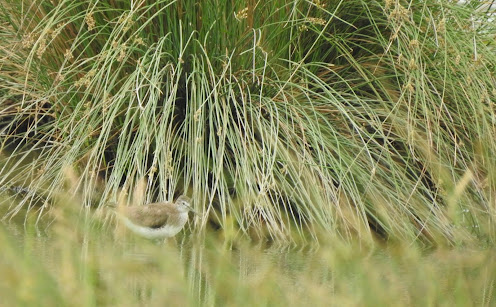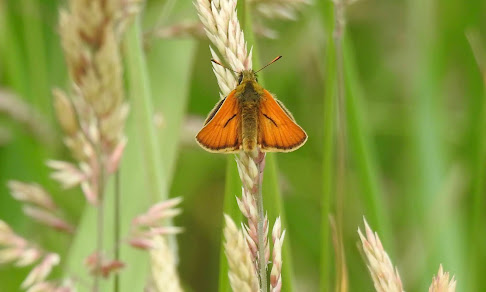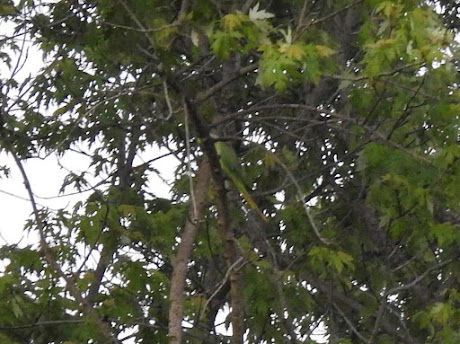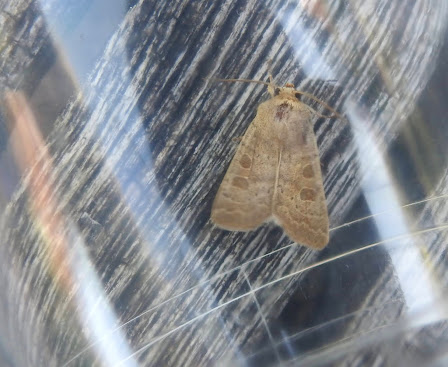The only fly in this morning's ointment was that I was not quite able to leave the house at the normal time, whereas Dave would be unable to stay beyond late morning. The upshot was that I visited the patch alone.
But yes, I'm back at Morton Bagot. What a relief. Late June on a cloudy breezy morning shouldn't feel this good. There was plenty of catching up to do. A few Ringlet butterflies ignored the grey skies, and were the forerunners of a decent crop of butterflies.
The main surprise was the appearance of two young buck Fallow Deers enticed down from the wooded hillside by the fresh green shoots on offer, courtesy of HOEF's forestry planting.
 |
| Fallow Deer |
This species is the least common of the three deer varieties to occur here, and this was my best ever view.
The grass has put on a spurt since I my last visit, and in places is shoulder height. All the usual warblers are still present, but song is diminishing. However, the presence of recently fledged juveniles (I suspect), made one Lesser Whitethroat particularly bold and much more showy than they usually are. It "teck"-ed angrily at me allowing a couple of shots before I left it in peace.
 |
| Lesser Whitethroat |
Reaching the first flash I was greeted by a marvellous sight. Mud. Well a decent edge anyway.
It's still June so expectations were low, but nevertheless they were amply met by the presence of three Green Sandpipers.
 |
| Green Sandpiper |
If you want to photograph waders, don't come here. Every possible viewing spot is screened by vegetation, either tall grass or low hanging branches (or both). I always leave with the uneasy feeling that some undiscovered wader is lurking out of sight.
As well as the Green Sandpipers I counted 31 Mallard, a female Teal, and eight Lapwings.
As the temperature rose, the insects came out to play. Nothing unexpected, but plenty of camera fodder.
 |
| Azure Damselfly,, Large Skipper and some ...er flies. |
 |
| Common Blue Damselfly |
 |
| A male Small Skipper |
My first Small Skipper looked fresh out and was probably among the first in the county this season. On the other hand the Meadow Browns, and Marbled Whites had no doubt been on the wing for several days.
I thought I'd tuck the moth stuff away at the end of this post. I had the trap out on Friday night and caught 48 moths of 19 species. It gets no easier, and I blundered my way through several tricky identifications before getting to the right answers. The ones that needed the most internet/county recorder assistance were a worn Heart and Club, and this Pine Carpet.
 |
| Pine Carpet |
My mistake was to ignore the fact that it looked like a Pine Carpet, and instead be swayed by the books implying they didn't emerge until the end of July and that a more likely candidate was the highly variable Grey Pine Carpet. Not variable enough it seems.
The full list was:























